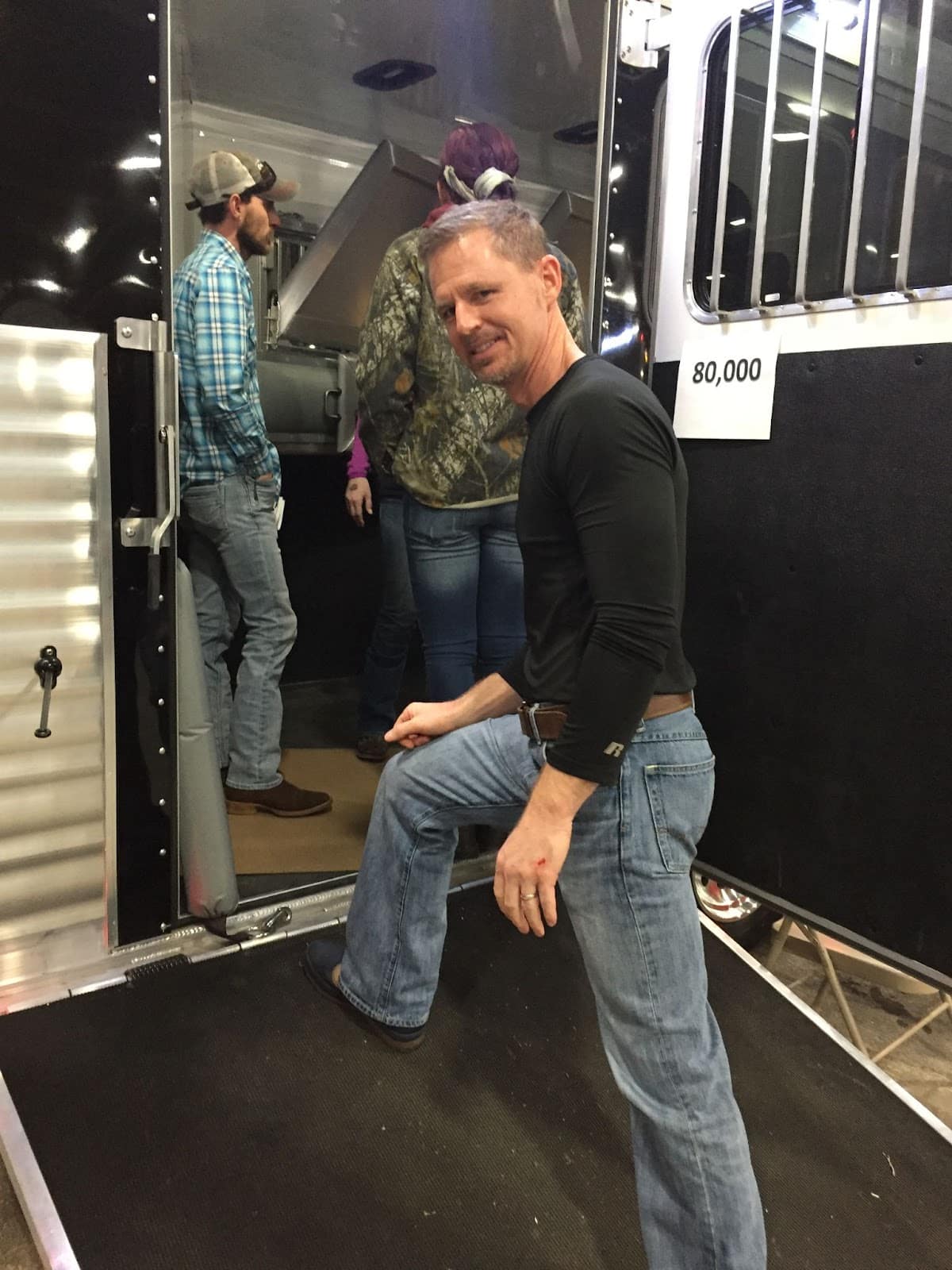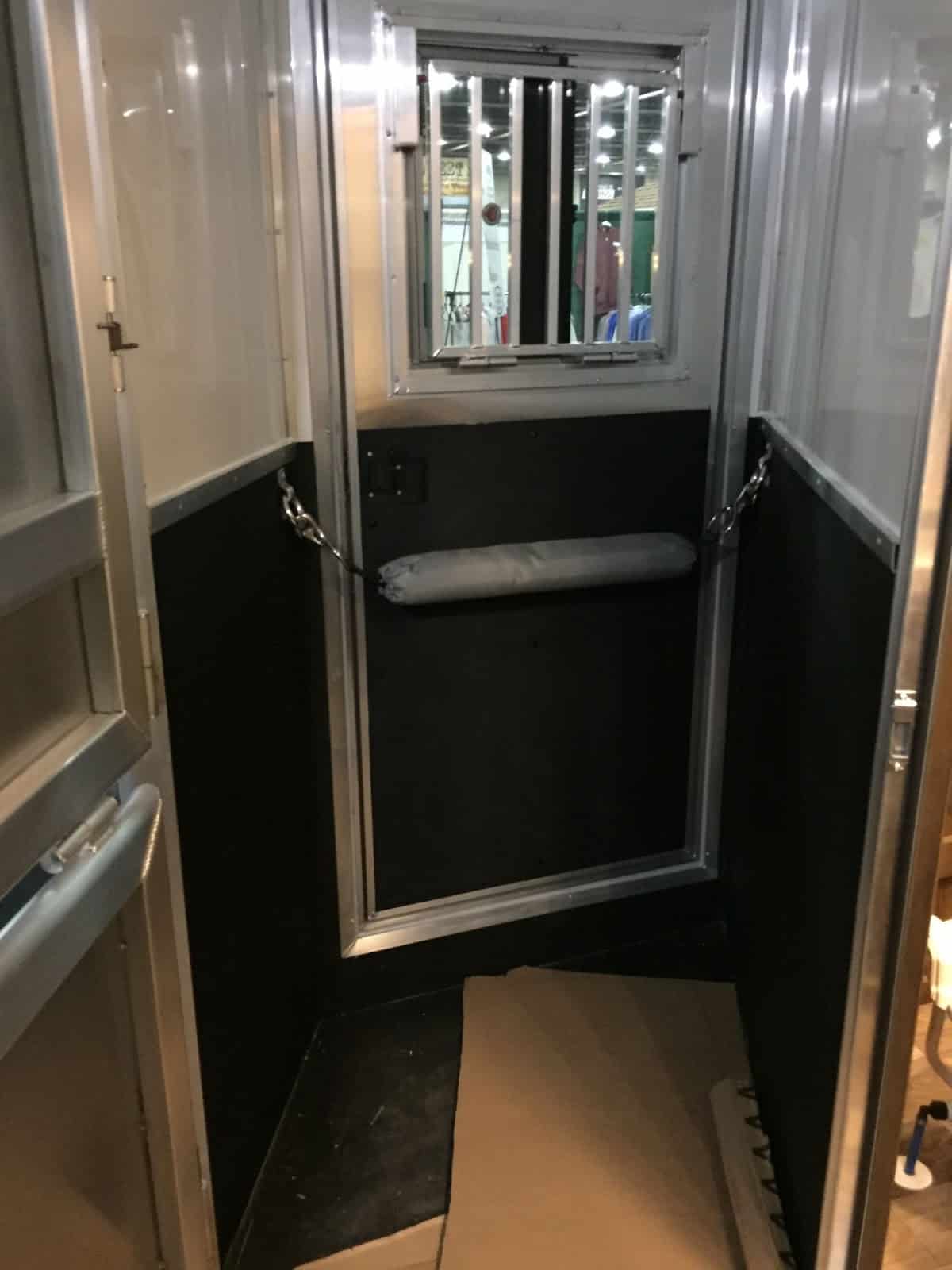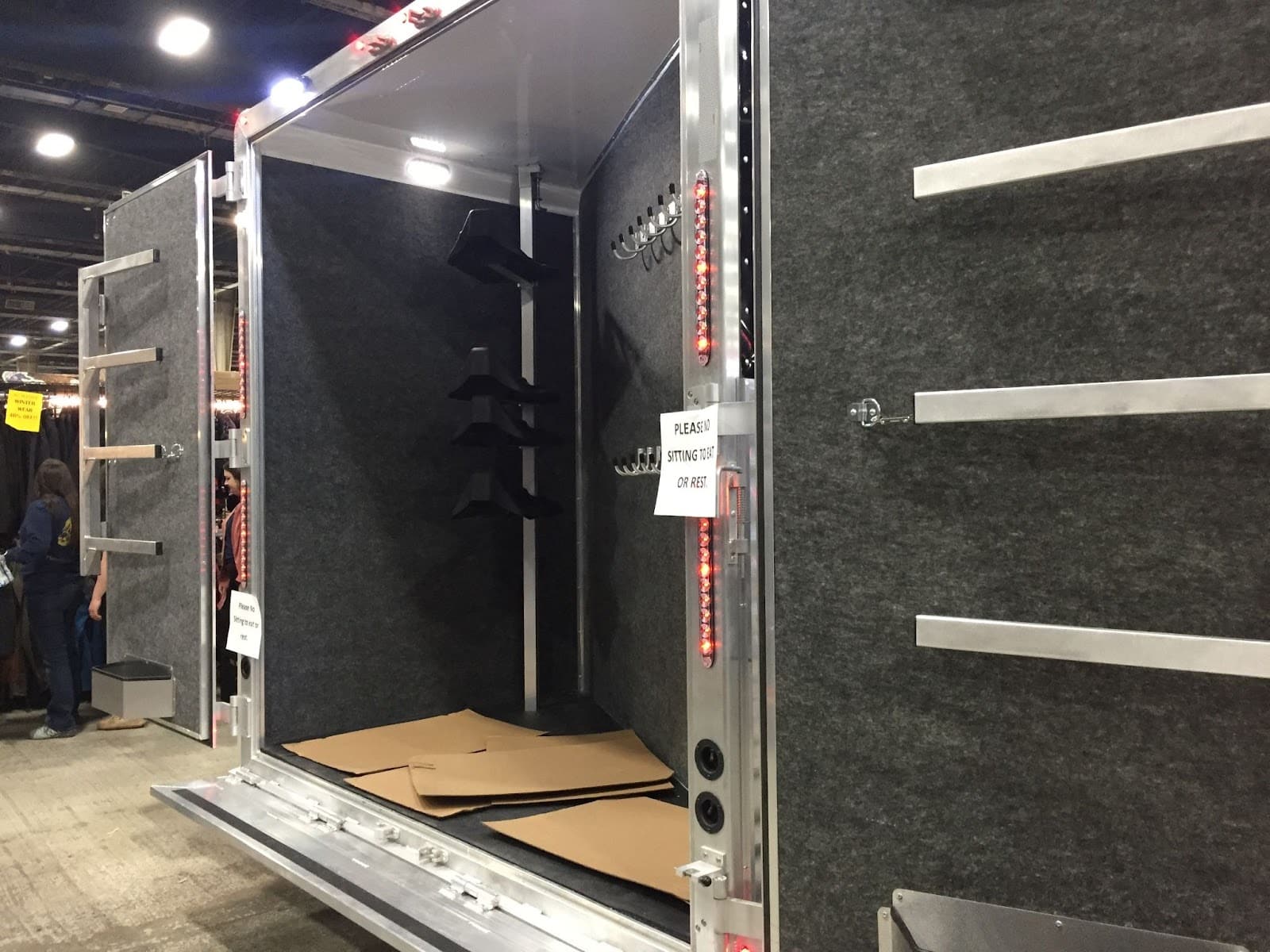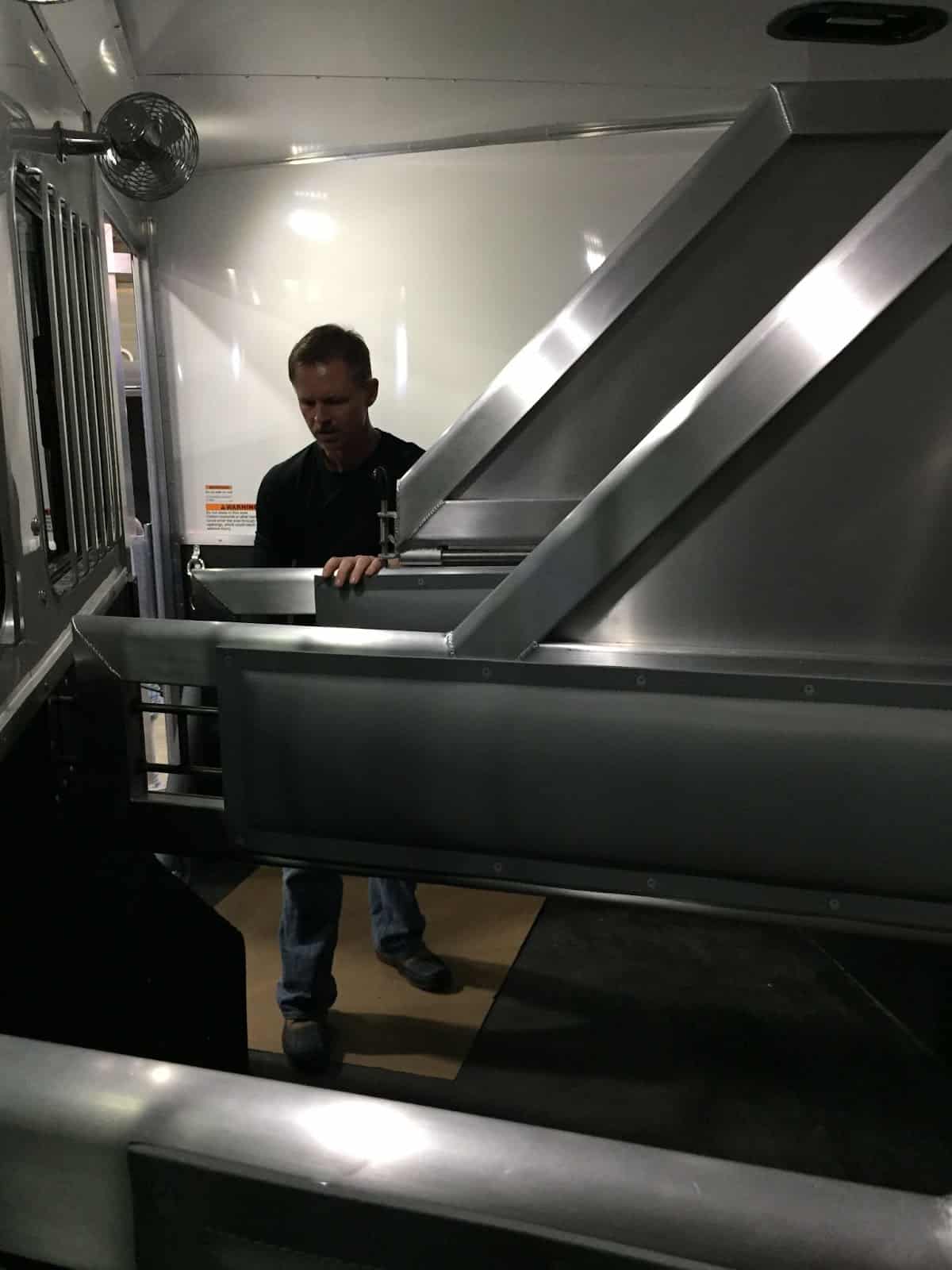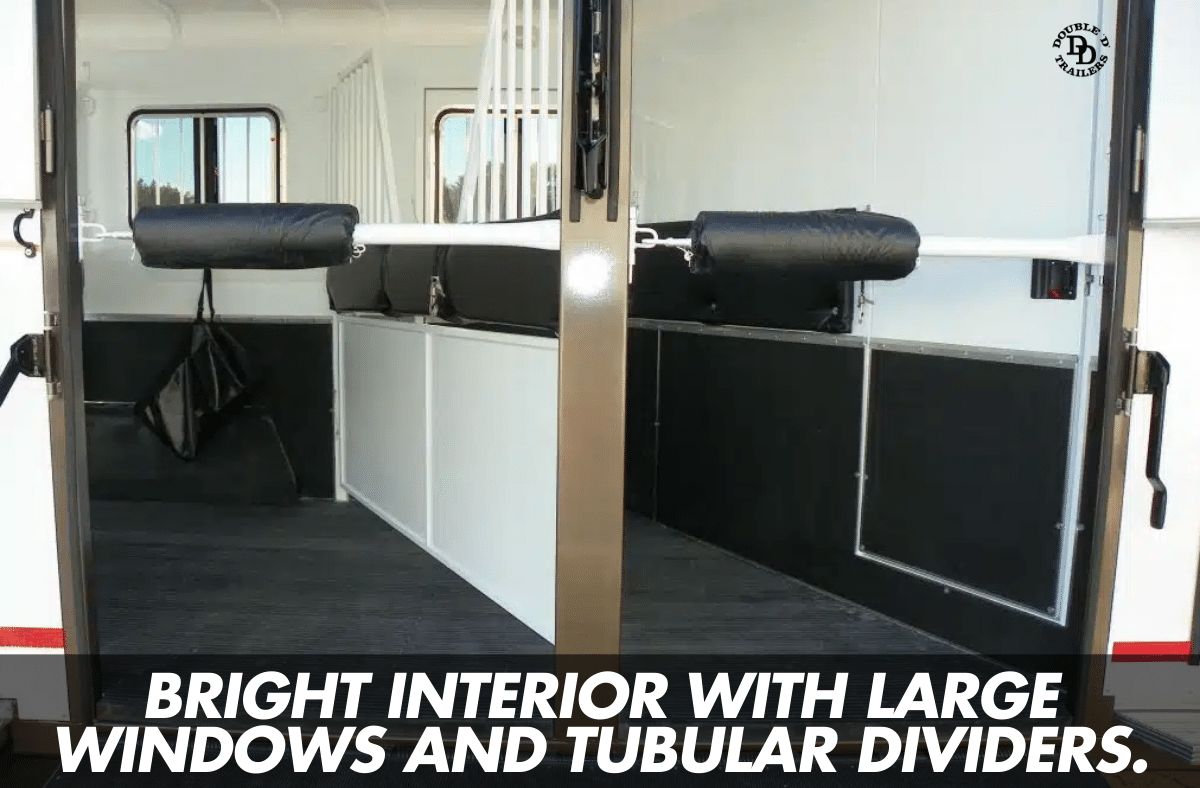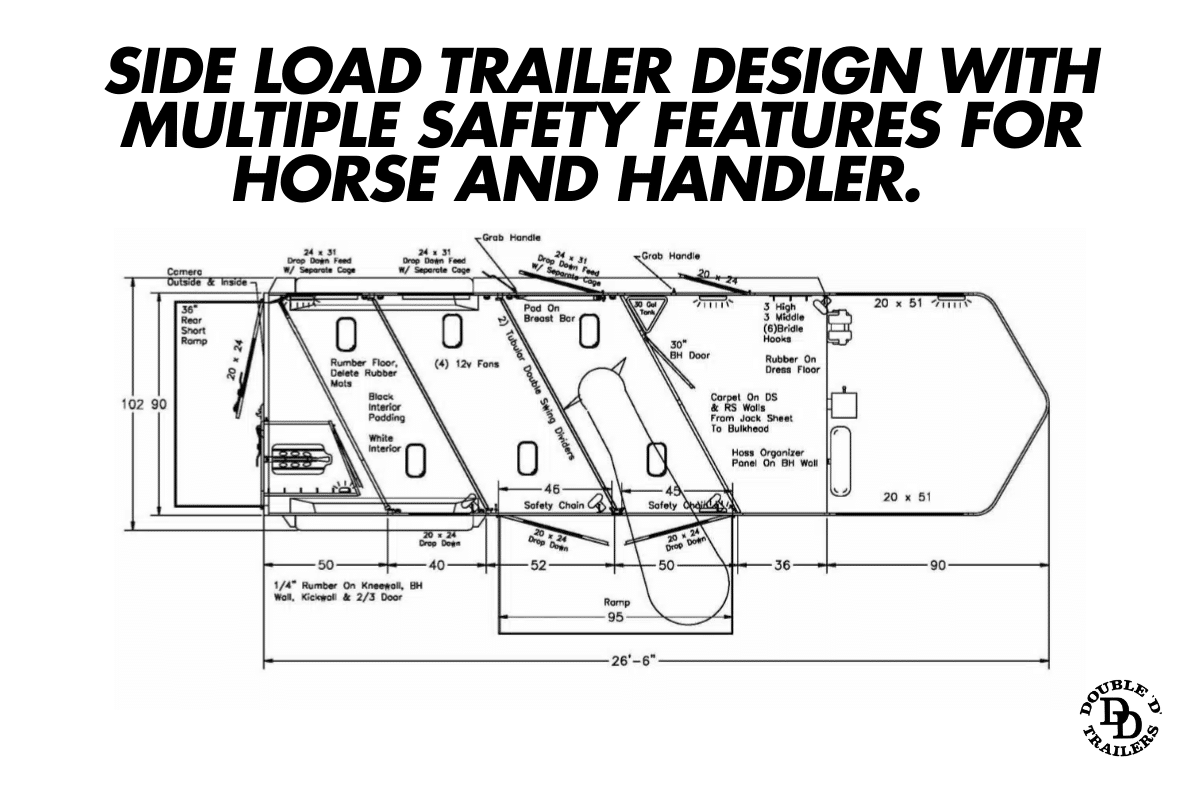Side Load Horse Trailers: A Safety-Conscious Owner’s Guide
A side load horse trailer is a great choice for owners who require increased interior space when hauling large-sized or multiple horses. However, many horse trailers on the market with side ramps and doors exhibit design flaws that pose serious safety risks. This guide identifies top concerns with conventional side load horse trailer designs and presents solutions, along with a checklist of features to look for in a side load horse trailer that prioritizes safety and equine comfort.
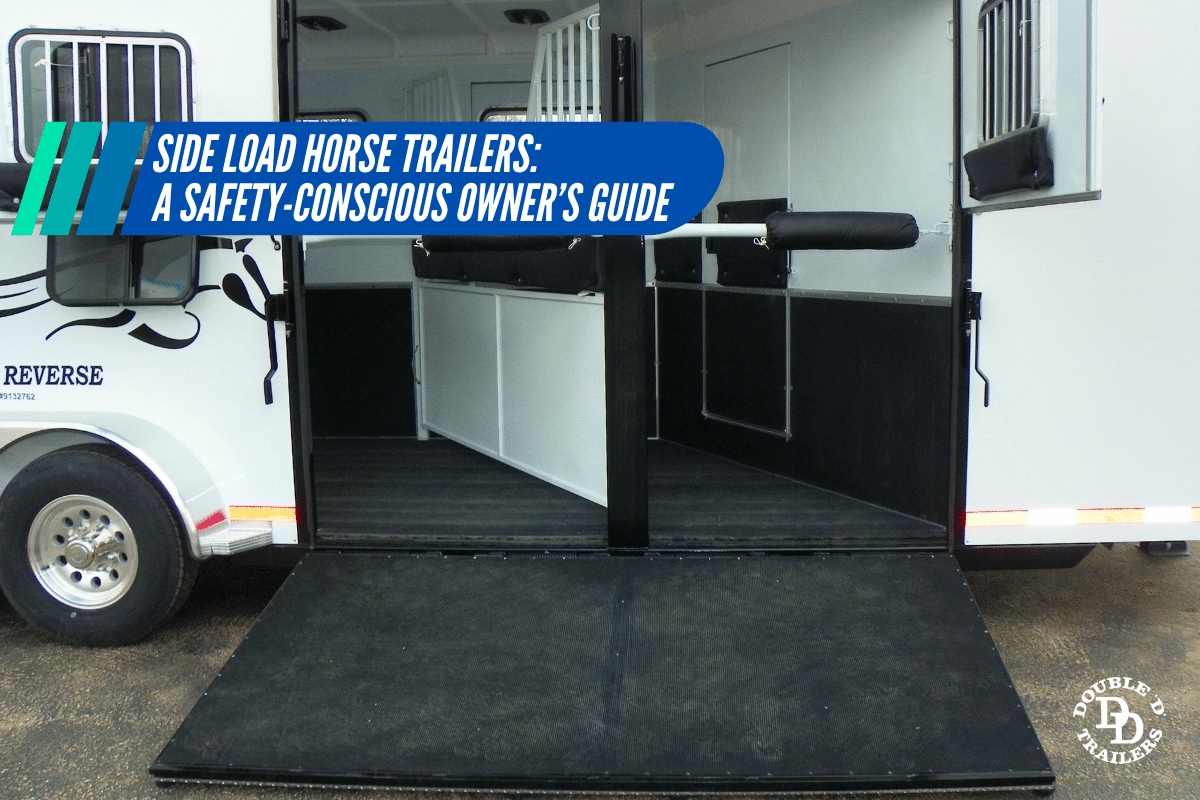
What is a Side Load Horse Trailer?
A side load horse trailer is a type of horse trailer that loads and unloads horses from the side rather than the rear. Side load trailers typically have a ramp that extends from the side of the trailer, making it easy for horses to walk on and off. A much better option is to use a fully walk-on-walk-off layout. This enhanced design lets you walk your horse onto the trailer using the side ramp leading to a rear-facing slant load stall then unload by simply walking the horse straight off the back of the trailer without backing or turning.
Separate studies conducted by Dr. Barbara Padalino et al and Ryo Kusunose show that horses travel with less stress and fatigue in the rear-facing direction or rear-facing at a slant position. The walk-on-walk-off layout further eliminates loading and unloading problems with anxious horses.
Common Problems with Traditional Side Load Horse Trailer Designs
Problem 1: Dangerously Steep Ramps
The side ramp is the first thing a horse encounters when entering a trailer. A ramp’s steepness varies greatly from brand to brand. Some ramps are so steep that you practically have to run your horse up to get them inside.
Steep ramps can lead to slips and injuries, creating dangerous loading conditions. Horses may resist or panic, increasing the likelihood of accidents for handlers.
Below is a photo of a very steep ramp on a side load horse trailer.
The Solution to Steep Side Load Horse Trailer Ramps
Look for a ramp with hinges placed lower on the side of the trailer to create a gentle slope. The ramp surface should be non-slip, such as textured rubber or specialized composite, to ensure secure footing.
The width of the horse trailer side ramp is another important consideration. Many ramps are very narrow and only wide enough to reach one horse stall inside the trailer. A double-wide ramp that leads into two horse stalls, providing ample space, is a much safer option.
Our SafeTack® models address these issues with shallow, double-wide ramps and non-slip materials. These features make loading safer and more efficient.
Problem 2: Lack of Multiple Exit Points
Escape doors are critical for safety. They provide an alternative exit for horses and handlers in emergencies. However, many well-known trailer brands create 5- or 6-horse trailers with a single side ramp for loading and a single exit door (without a ramp) on the front side of the trailer. This second door allows the handler to get out, but the horse is forced to enter and exit through the single side door. (see photo below)
Another exit point is the rear of a trailer, where you would normally find a rear-loading doorway. However, this space is sometimes taken up by a stationary rear tack storage area that spans the entire width of the trailer. Sure, it’s great for storing your gear, but the sacrifice in safety is just not worth the storage. Many horses hate to back up, so when you add together a small space and a single point of exit, you are asking for trouble.
A side load horse trailer with limited escape routes poses significant risks. The lack of alternative exits is dangerous in an emergency, such as a trailer fire or a trapped horse. Limited escape routes increase evacuation time, leading to greater risk of injury or fatality. A single exit point creates a bottleneck, increasing stress and the potential for injuries in a panic. A confined space with one exit makes horses feel trapped, leading to anxiety, claustrophobia, and resistance to loading. D. Brad Heath explains horses are naturally claustrophobic, and a single exit point exacerbates fear and increases injury risk during loading and unloading.
The Solution to Limited Escape Points on Side Load Horse Trailer Layouts
Inspect the side load horse trailer’s interior and look around for the number of exit points you and your horse can use such as a side escape door towards the front among others. Multiple exit doors improve handler safety, allowing quick exits if a horse becomes difficult.
Having the entire rear of the trailer open up for loading and unloading is a much better option. The SafeTack® design provides a swing-out rear tack area, clearing the path for easy entry and exit. This patented innovation by Double D Trailers prevents horses from feeling confined during loading and makes unloading safe and convenient for horses and handlers.
Problem 3: Dark and Confined Interiors
As mentioned earlier, some brands force horses to enter through a side load ramp and doorway and walk into their slant stall. Then, to exit, they have to twist around a small space to turn around, or just back off the same side-load doorway.
Remember, horses are naturally claustrophobic prey animals. To them, a trailer is a big, scary, metal box that makes weird sounds and looks dark on the inside. Don’t complicate loading by asking them to walk up a narrow horse trailer side ramp into a narrow doorway. Any sort of hesitation or reaction has the potential to injure them or the handler. Small, dark interiors can also increase anxiety and stress among horses.
Just look at the dark and confined interior on this side load horse trailer pictured below.
Solution to Claustrophobic Side Load Horse Trailer Designs
A fully walk-on-walk-off layout is a safer solution to a restrictive interior in a side load horse trailer. This configuration reduces stress for your horse. It also lets you load and unload horses in two ways.
- Walk the horses using the side ramp into the rear-facing slant load stall. Unload the horses by simply walking straight off the back of the trailer.
Kalib Norris of Double D Trailers demonstrates the mechanics of the walk-on-walk-off layout in a 3-horse gooseneck trailer in the following video.
- Load the horses from the rear of the trailer into forward-facing stalls. Unload the horses by walking each one forward off the side ramp to exit the trailer.
Claustrophobia is often triggered by confinement in dark, enclosed spaces. A bright interior helps horses see their surroundings and creates a less intimidating environment. Ample headroom, width, and length, allow horses to move their heads and necks freely. Large windows that allow natural light are crucial. White interior walls and roofs further enhance brightness. Proper ventilation is essential; roof vents and large windows should be strategically placed to ensure continuous airflow, preventing heat and odor buildup.
Innovations in Double D Trailers’ Side Load Horse Trailer Models
Double D Trailers’ mission is to offer safer options in the horse trailer market with the highest quality standards.
The following are exclusive and standard features of our side load horse trailer models to ensure safety and maximize the comfort of horses and humans.
- SafeKick® wall system
Absorbs impact, preventing injuries caused by kicking. This flexible material ensures a calm environment for horses during transit.
- Z-Frame® technology
Combines best features of steel and aluminum with this zinc-infused alloy to improve structural integrity while reducing weight. This enhances durability and towing stability.
- Adjustable stalls
Customizes stall sizes, ensuring that each horse travels comfortably. This flexibility makes side load trailers suitable for various breeds including Warmbloods.
- Tubular head dividers
Allows for better visibility and airflow between stalls.
SafeTack® Reverse Slant Load Design: our most unique innovation to side load horse trailers.
The patented SafeTack® Reverse Slant Load elevates horse trailer design to a new level. Horses load easily through a spacious side access door and exit safely through a wide, unobstructed rear opening. This configuration, made possible by the swing-out SafeTack storage compartment, enhances safety and ease of use. It stands in stark contrast to traditional side load trailers, where fixed rear tack storage often restricts rear exit.
The science behind the SafeTack® Reverse Slant Load with side ramp
A 2012 study from the Journal of Veterinary Behavior examined the impact of travel position on horses. Researchers transported twelve horses in a trailer, varying their orientation (forward, backward, sideways) to assess stress levels during a three-hour journey. Horses facing backward or backward at a slant exhibited less stress and fatigue than those facing forward. The backward-facing group, in particular, demonstrated minimal signs of physical exertion upon arrival.
This suggests that rear-facing or angled travel is the optimal orientation for equine transport, promoting both physical and psychological well-being. Researchers confirmed these findings by measuring cortisol, a stress hormone, in the horses.
Key Considerations When Buying a Side Load Horse Trailer
Selecting a side load horse trailer configuration depends primarily on three deciding factors.
- The required interior space for your horses, your tack room, and your dressing room
- Your horse’s loading temperament
Double D Trailers adds another important consideration for choosing a side load horse trailer: safety and efficiency.
The spacious interiors of side load horse trailers accommodate both horses and tack storage, as well as enough area for a dressing room. Side loading, particularly with a double-wide ramp, simplifies the process compared to rear loading.
Some horses, due to past experiences or temperament, may be resistant to entering a trailer. A trailer with a more open and inviting interior mostly solves this problem of anxious horses. Double D Trailers' walk-on, walk-off layout further enhances the convenient feature of a side load horse trailer, promoting efficient loading and unloading while reducing injury risk for horse and handler.
Choosing the hitch type that meets your needs is the next step in your purchase decision. Explore the different models available at Double D Trailers and start building your trailer.
Side Load Horse Trailer - Gooseneck, Bumper Pull, Living Quarters
If you're unsure whether to choose a forward-facing or rear-facing configuration, we recommend the SafeTack® Reverse Slant Load models, as they accommodate both orientations.
Aside from choosing between different trailer configurations and hitch types, you also need to consider the key aspects of buying a horse trailer in general. We’ve written a buying guide where we discuss the importance of determining horse trailer size and capacity to vehicle weight and towing capacity and evaluating trailer materials: Everything You Need To Know Before Buying a Horse Trailer
For more specific criteria of a safe horse trailer, we also have a Guide to Buying a Safe Horse Trailer
Choose the Right Side Load Horse Trailer for Safe and Comfortable Horse Transportation
By understanding design features, materials, and construction techniques that contribute to safety, horse owners can make informed decisions when selecting a side load horse trailer. Prioritizing horse comfort, providing ample space, ensuring proper ventilation, and incorporating safety features like escape doors and sturdy construction are essential. Remember to consider your specific needs, including the number and size of horses you'll be transporting, your tow vehicle's capacity, and the types of journeys you'll be undertaking. With careful consideration and attention to detail, you can choose a side load horse trailer that will provide a safe and comfortable travel experience for your equine companions.
Not sure which side load trailer fits your needs?
Book a video call with our team to get personalized recommendations!

